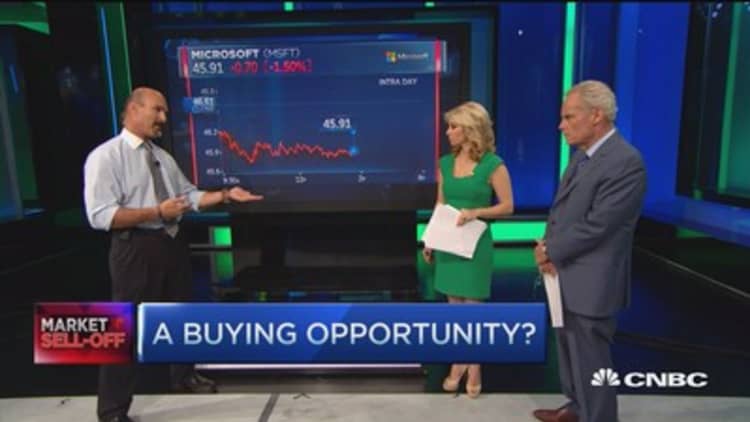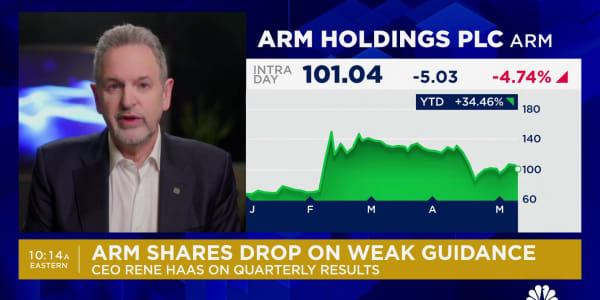
For at least six years, stock pickers have tried to overcome an environment where everything moved up and down together, making it extremely difficult to find opportunities.
In 2015, and particularly as of late, some relief has come.
Amid a lot of bad things happening to the market—think slumping oil prices, global growth weakness and the colliding and conflicting goals of the world's central banks—one development has loomed as a marked positive: Declining correlation between individual stocks and sectors.
Correlation is simply a percentage or ratio measure of how individual stocks, sectors or asset classes move up and down at the same time.
High-correlation environments, like the markets have seen since the Great Recession and the Federal Reserve's aggressive intervention efforts, present challenges to active managers and those looking to employ diversified portfolios. Correlations among the 's 10 sectors peaked at 95 percent in 2011, meaning almost perfect movements in the same direction, according to Convergex, a New York-based brokerage.
By one measure, though, the correlation level is now around its lowest in seven years. The CBOE S&P 500 Implied Correlation Index was below 49 Thursday and fell below 44 over the past few weeks, indicating a sharp downturn to the lowest level since August 2008. The ICI, as traders call it, is an options-based measure of the S&P 500's top 50 companies.
With that relatively low correlations level should come opportunities.
"It does a couple of things: It allows active managers to outperform. More importantly, it provides diversification," Nick Colas, chief market strategist at Convergex, said in a phone interview. "Diversification mathematically is predicated on lower correlations."
The big winners so far from the trend are active managers.
Though investor money is exiting actively managed U.S-focused mutual funds at record levels, performance actually has been better than in recent years.
Read MoreMoney flees US stocks at highest level since 1993
Where only about 1 in 4 active managers had been beating their benchmarks during much of the six-year post-crisis bull market, that number has risen sharply this year. About 45 percent are providing alpha this year, according to Savita Subramanian, equity and quant strategist at Bank of America Merrill Lynch.
Results have been even better recently: In June, 63 percent of managers topped the Russell 1000 while 50 percent beat in July. The numbers were even better for managers who focus on value stocks, with a 75 percent beat rate.
Hedge funds, which have been laggards for several years running, also stand to benefit from a related trend, according to a Goldman Sachs analysis.
Correlation's close cousin, known as dispersion, also has been on the rise. Dispersion refers to the difference in performance between the various market sectors. That, too, has been narrow during the post-crisis years, but has been widening in 2015.
"Hedge fund relative performance has historically mirrored the level of return dispersion," Goldman said in a report for clients. "Although funds have lagged (year to date), higher dispersion bodes well for stock-picker performance, and hedge fund favorite longs have performed best YTD in sectors with the highest dispersion."
As a result, hedge funds have reduced their exposure to exchange-traded funds, most of which follow passive index-tracking strategies, to their lowest level since 2007. Hedge funds are now 53 percent long, or betting on a rising market, which is just off highs hit earlier this year, while stock turnover, a measure of how often positions are bought and sold, is at a record low 27 percent, according to Goldman.
Such trends should be working in favor of the market, but are not so far. Following a sharp selloff Thursday, the S&P 500 turned slightly negative for the year, while the Dow Jones Industrial Average is down a full 4 percent in 2015.
Convergex's Colas said a measure the firm uses for correlation, which looks at movements among the entire S&P 500's 10 sectors rather than the narrower view of the ICI index, shows correlations declining but still elevated at about 80 percent. Like many others on Wall Street, he cites the Fed and its zero interest rates for creating an air of "financial suppression" that has kept correlations tight, prices high and diversification difficult.
Expectations for the Fed to raise rates have created market uncertainty, but ultimately should open up opportunities, Colas said.
"It's not enough. We're not back to 50 percent, we're still at 80," he said. "If the Fed were to normalize, you would see correlations break apart because it's less about what the Fed's going to do and more about what the fundamentals say."






